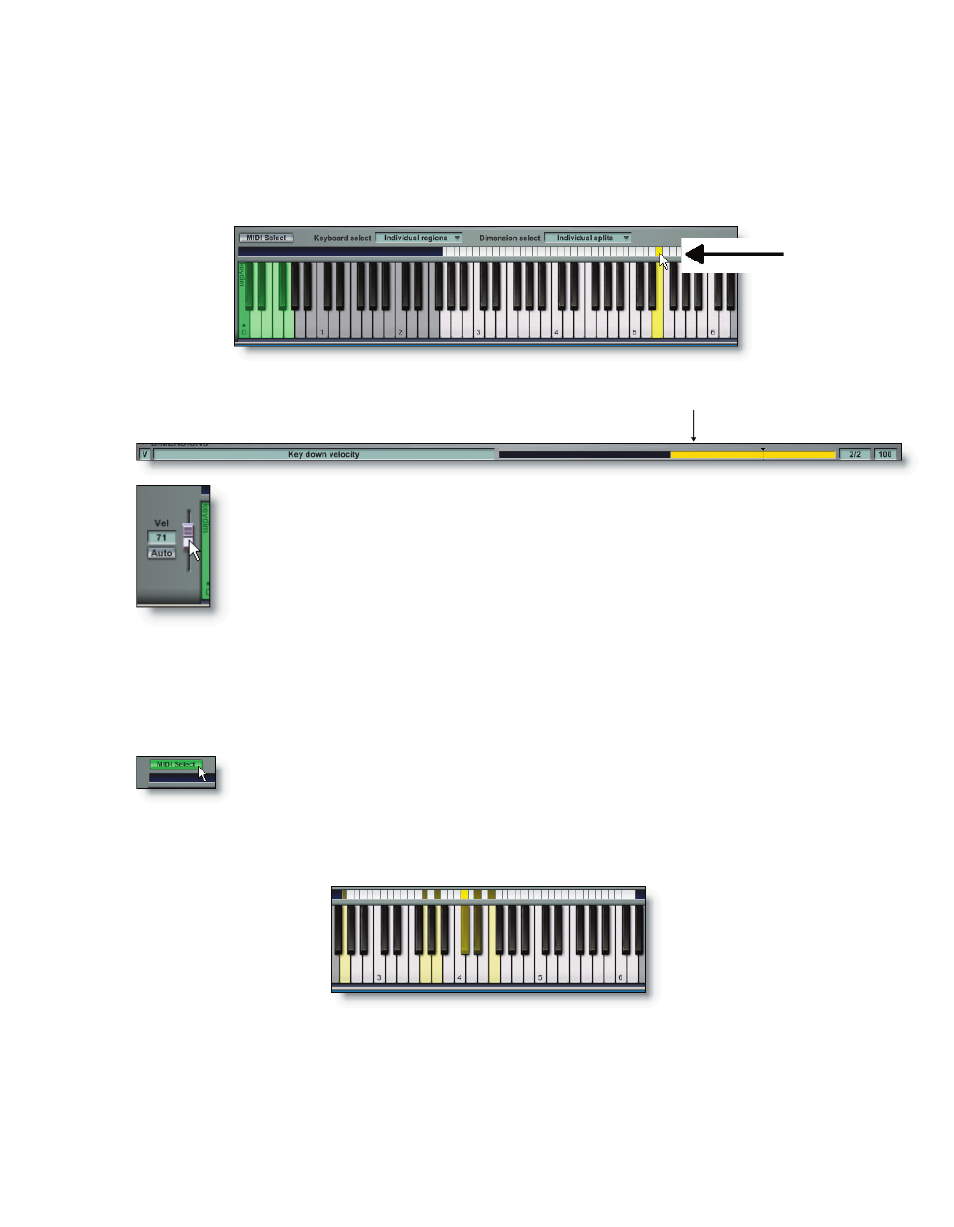Teac GigaStudio 3 User Manual
Page 99

98
99
The selection is then marked with a black dot on the key. This selection will remain
active until a different dimension key is selected. Next, we select the note region. In the
slot just above the keys along the range of the keyboard are the note region selectors.
A selected note region will be yellow. To manually select a note region where our out of
tune same is, click on E5 in the region selection slot.
When we selected the note region, the selection for the upper velocity split is the one
we want. The reason for this is that the behavior of the click for note-on velocity is de-
fined as 100 (default).
If you wanted a different velocity split, simply adjust the velocity fader
control to define the velocity value of a mouse-click for note-ons.
Selecting the Auto option enables you to click at different places on the
individual keys to get low to high velocity values.
Now we can edit the precise dimension, note region, and split at the sample level.
Simply adjust the Articulation control for Tune to correct the sample’s pitch. When you
save the performance, the edit will be saved with it.
Now that you understand the concept of a manual selection, use the MIDI Select to
do a multiple selection of several note regions. First, enable MIDI Select.
With MIDI Select active, any note played on either the GigaStudio host Virtual Key-
board (keystroke Alt+K) or an attached MIDI control source (controller keyboard) will
select each subsequent note triggered.
Any edits made will affect only the selected note regions. Be sure to select any di-
mension, velocity, and stereo splits and then make the edits. To reset the selection click,
with the mouse, any key in the instrument note range on the QuickEdit keyboard.
There are many powerful selection options to know about that are beyond the scope